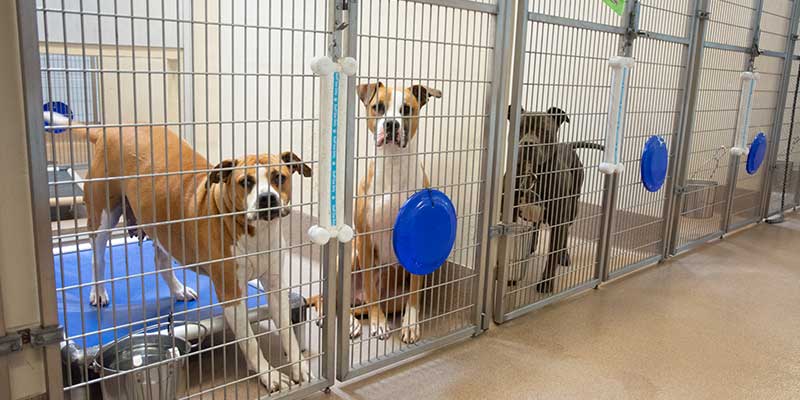Caring for a pet goes far beyond providing food, water, and shelter. Just like humans, pets need regular maintenance to stay comfortable, healthy, and happy. Grooming plays a vital role in their overall well-being, helping to prevent health issues while keeping them looking and feeling their best. For many pet owners, grooming is not just about appearance—it’s about ensuring a higher quality of life for their furry companions.
What is Pet Grooming?
Pet Grooming refers to the regular care and maintenance of a pet’s hygiene and appearance. It involves more than a quick bath or brush; grooming can include coat trimming, nail clipping, ear cleaning, and even specialized treatments tailored to a pet’s breed or health needs. These services are essential in preventing discomfort and detecting health problems early.
Why Grooming is Essential for Pets
Routine grooming is not simply about aesthetics. It offers a wide range of benefits for both pets and their owners:
- Prevents Health Issues: Regular checks during grooming can reveal skin infections, parasites, or lumps.
- Reduces Shedding: Brushing removes excess hair and prevents mats or tangles.
- Promotes Comfort: Clean fur, trimmed nails, and healthy skin reduce irritation.
- Improves Hygiene at Home: Well-groomed pets shed less dander and dirt, keeping households cleaner.
- Enhances Bonding: Grooming provides a chance to connect with pets in a gentle, caring way.
For many pets, regular grooming contributes to both physical health and emotional well-being.
Different Aspects of Grooming
Pet grooming is multi-faceted and can be customized based on the species, breed, and lifestyle of the animal. Common aspects include:
- Bathing: Using pet-safe shampoos to clean the coat and skin.
- Brushing: Reducing tangles, mats, and shedding while distributing natural oils.
- Haircuts: For certain breeds, regular trims are essential to avoid discomfort.
- Nail Trimming: Prevents overgrowth, pain, or posture issues.
- Ear Cleaning: Reduces the risk of infections and removes dirt buildup.
- Teeth Care: Dental hygiene is often overlooked but critical to long-term health.
Each element contributes to maintaining a pet’s health and comfort.
Grooming Needs by Pet Type
Not all pets have the same grooming requirements:
- Dogs: Breeds with long or thick coats, like Golden Retrievers or Poodles, need frequent brushing and trimming, while short-haired breeds may require less frequent care.
- Cats: Long-haired cats such as Persians require daily brushing, while short-haired cats benefit from occasional grooming to control shedding.
- Small Animals: Rabbits, guinea pigs, and ferrets need regular coat maintenance and nail checks.
Understanding your pet’s unique grooming needs ensures proper care.
Grooming at Home vs. Professional Services
Many pet owners choose to groom their animals at home, while others prefer professional services. Both options have benefits:
- Home Grooming: Builds trust and strengthens the bond between pet and owner. It also allows for frequent, gentle maintenance.
- Professional Grooming: Provides expert care, specialized tools, and techniques. Professionals are also trained to spot potential health issues early.
Often, a combination of both is ideal—basic maintenance at home with regular professional sessions for thorough care.
Preparing a Pet for Grooming
Not all pets take naturally to grooming, especially if they’re not accustomed to it. Preparation can make the process smoother:
- Start Early: Introduce grooming during puppyhood or kittenhood to build comfort.
- Use Positive Reinforcement: Reward calm behavior with treats or affection.
- Keep Sessions Short: Begin with brief grooming times and extend gradually.
- Create a Calm Environment: A quiet, relaxed setting helps reduce stress.
This approach ensures pets see grooming as a positive experience rather than a stressful chore.
Grooming and Health Connection
Regular grooming often reveals health issues that may go unnoticed otherwise. Signs such as dandruff, bald patches, unusual odors, or changes in skin texture can indicate underlying conditions. Early detection allows for prompt treatment, preventing minor problems from escalating into serious concerns.
Seasonal Grooming Considerations
Changes in weather also affect grooming needs:
- Summer: Pets may require shorter trims to stay cool and prevent overheating.
- Winter: Longer coats provide insulation, but regular brushing prevents mats.
- Spring and Fall: Shedding seasons demand extra brushing to manage hair loss.
Adjusting grooming routines according to seasons keeps pets comfortable year-round.
Grooming for Senior Pets
Older pets often require special attention during grooming. Arthritis or mobility issues can make handling more sensitive. Gentle techniques, supportive equipment, and extra patience are key to ensuring senior pets remain comfortable and stress-free during grooming sessions.
Choosing the Right Grooming Service
When seeking professional grooming, owners should consider:
- Clean and Safe Environment: Hygienic spaces reduce health risks.
- Trained Professionals: Knowledgeable staff can handle different breeds and temperaments.
- Personalized Services: Tailored approaches for pets with unique needs.
- Calm Handling: Gentle care ensures pets feel safe and secure.
Visiting or researching a grooming service beforehand helps ensure it aligns with your pet’s needs.
Conclusion
Pet grooming is more than just a way to keep animals looking tidy—it’s a vital part of their overall health and well-being. From preventing skin problems to maintaining comfort and hygiene, grooming contributes to a happier and healthier life. Whether done at home or through professional services, regular grooming routines should be part of every pet’s care plan. With patience, consistency, and the right approach, grooming becomes not just a necessity, but a way to strengthen the loving bond between pets and their families.


